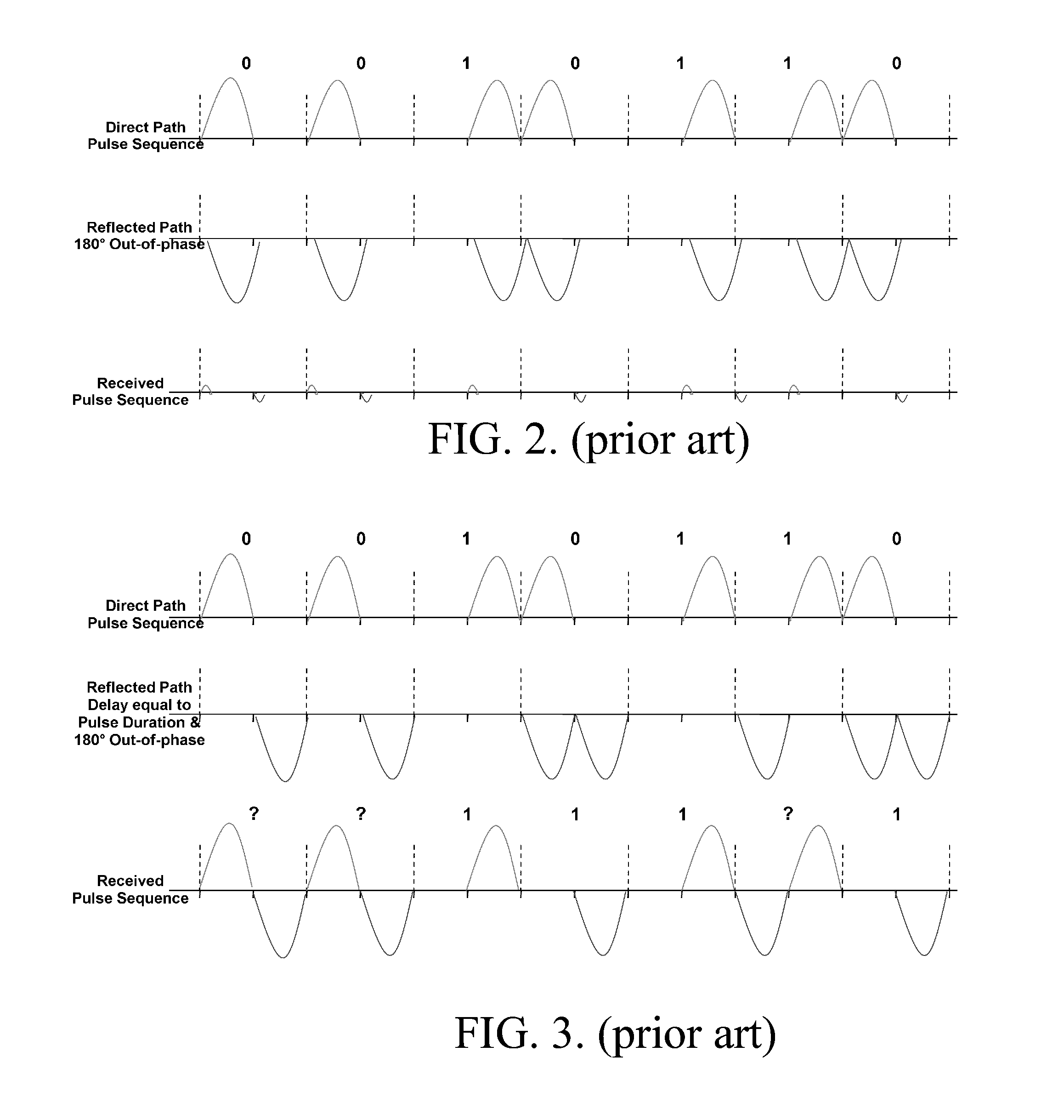Ads-b receiver system with multipath mitigation
- Summary
- Abstract
- Description
- Claims
- Application Information
AI Technical Summary
Benefits of technology
Problems solved by technology
Method used
Image
Examples
Embodiment Construction
[0041]FIG. 4 is a block diagram of an automatic dependent surveillance-broadcast (ADS-B) receiver system 20, which uses message decoding algorithms with long delay multipath mitigation and multiple antenna diversity reception to provide mitigation against short delay multipath. The system 20 includes a plurality of antennas 22, with receivers 26, a beam forming device 28, a plurality of pulse detection filters 29, a device 30 that performs ADS-B burst detection on the plurality of diversity receivers, a device 34 that cancels the interference due to long delay multipath on a selected diversity receiver output, and a device 36 that performs message decoding.
[0042]Antenna space diversity is used to combat interference fading due to short delay multipath. Mode S transponder receivers that are also used to receive ADS-B messages employ top and bottom mounted omnidirectional antennas for diversity reception. Because these antennas are spaced in the vertical plane, they are most effective...
PUM
 Login to View More
Login to View More Abstract
Description
Claims
Application Information
 Login to View More
Login to View More - R&D
- Intellectual Property
- Life Sciences
- Materials
- Tech Scout
- Unparalleled Data Quality
- Higher Quality Content
- 60% Fewer Hallucinations
Browse by: Latest US Patents, China's latest patents, Technical Efficacy Thesaurus, Application Domain, Technology Topic, Popular Technical Reports.
© 2025 PatSnap. All rights reserved.Legal|Privacy policy|Modern Slavery Act Transparency Statement|Sitemap|About US| Contact US: help@patsnap.com



